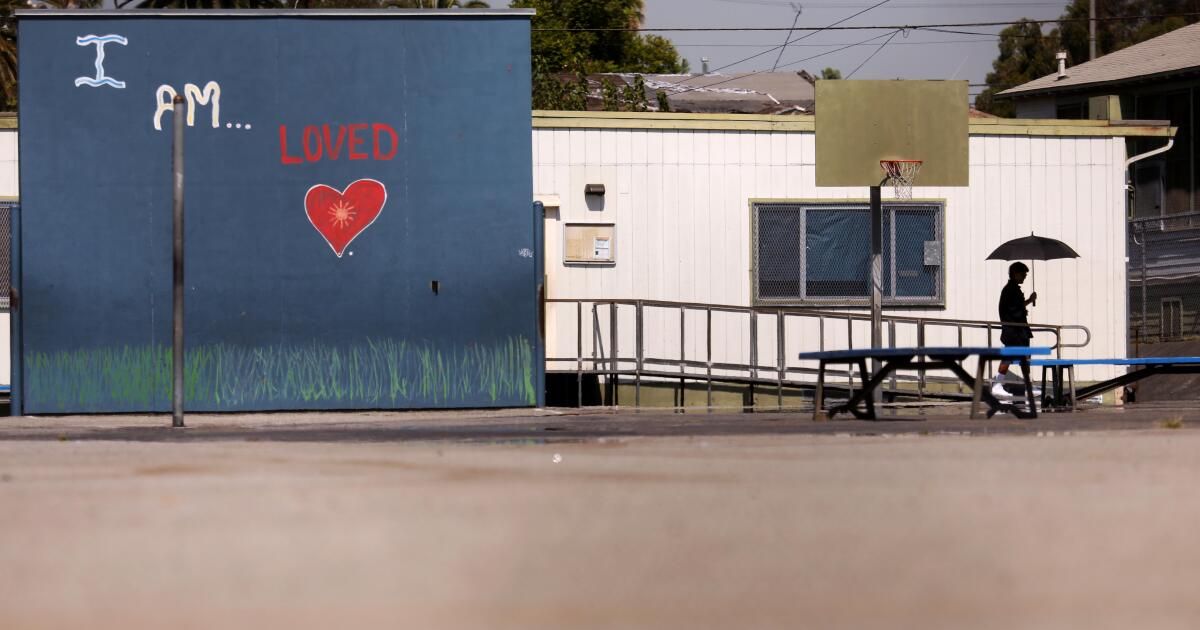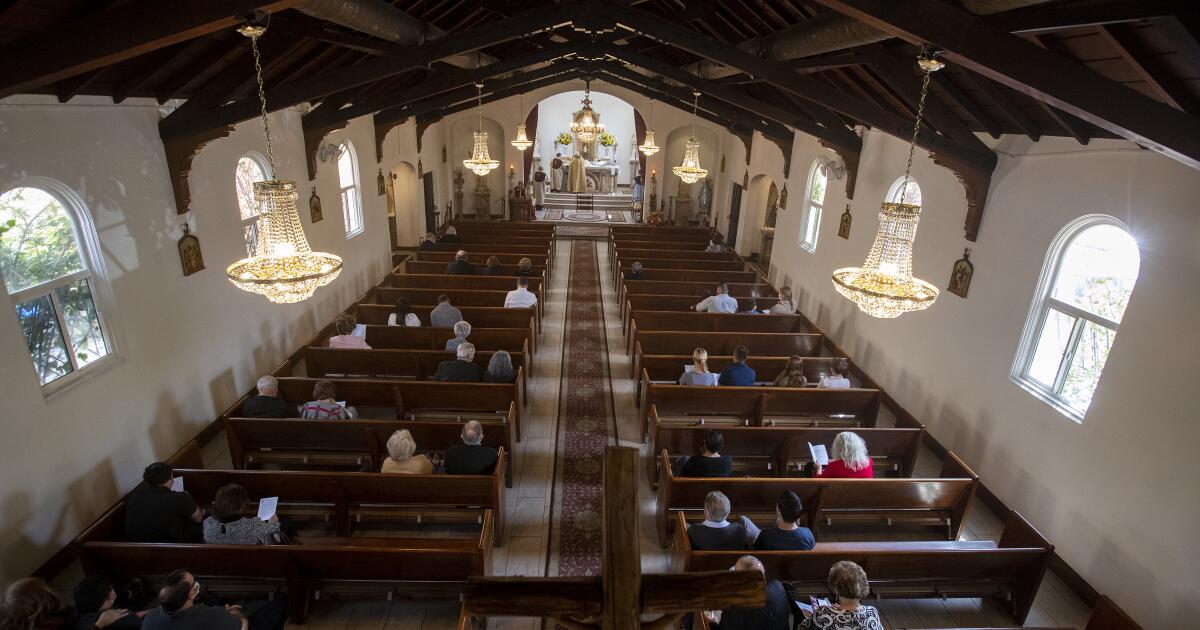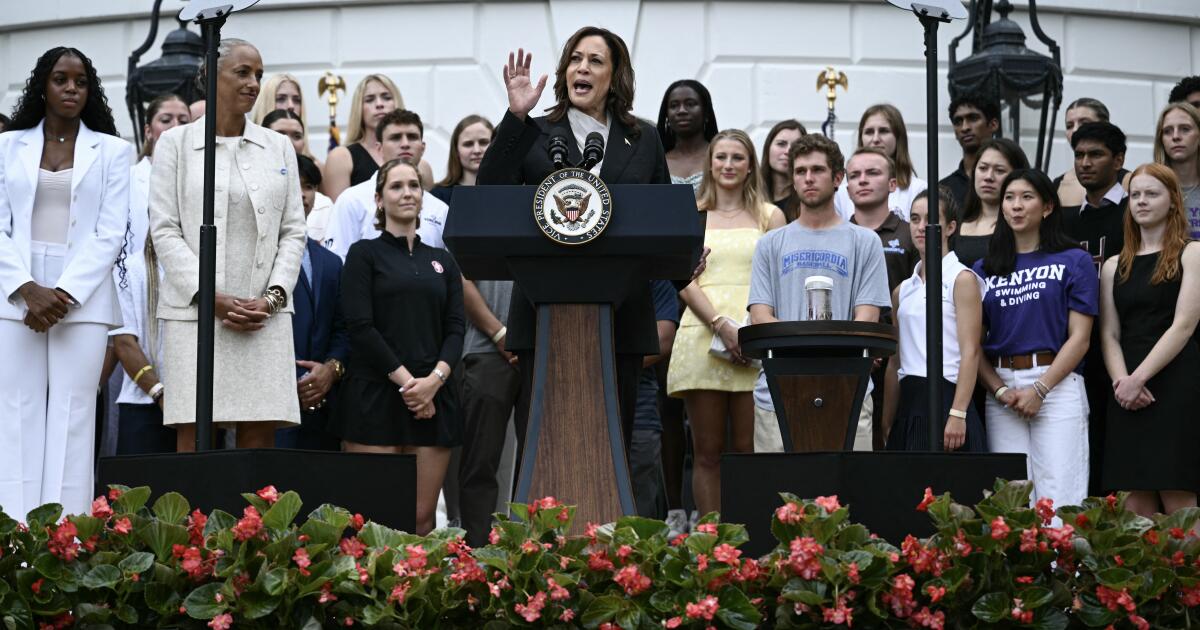As the Los Angeles Unified School District prepares for the first day of school on Monday, it’s unclear whether students will have working air conditioning in all classrooms. Technicians have been fielding more than 1,000 service calls for cooling systems, including about 650 classrooms with units in need of repair.
The district says that level of demand is typical for this time of year and that it’s crucial work. Having safe temperatures in classrooms should be a baseline expectation, especially considering that kids are returning to school during the worst heat of the year. But it’s not, because California doesn’t require air conditioning in K-12 classrooms — a carelessly outdated position at a time when climate change is making heat waves more dangerous and intense.
The sad reality is that some California students are returning to classrooms this month with inadequate air conditioning or no air conditioning at all. In the Long Beach Unified School District, the state’s fourth-largest school district, thousands of students will return this month to 556 classrooms in 13 schools that do not have air conditioning.
How can children be expected to concentrate, much less perform at their best, when they are sweating, dehydrated or suffering from heat exhaustion? Sweltering classrooms are unacceptably dangerous and unfair to children, who are at greater risk for fatigue, nosebleeds, headaches, vomiting and other symptoms of heat-related illness because their bodies heat up faster, take longer to break out in a sweat and have more trouble regulating their temperature than adults. Hot classrooms also impede student learning and are linked to lower test scores and poorer academic performance.
The Long Beach Unified School District, responding to more than a decade of complaints about dangerously overheated classrooms, now intends to install air conditioning in all schools that don’t have it within the next three years. One exception is Long Beach Polytechnic High School, the district’s largest, where the entire campus won’t have air conditioning until 2028.
In the meantime, district officials said, classrooms without air conditioning will be equipped with chilled water dispensers, new or repaired curtains and portable fans. But these are patches at best, and not much help to overheated students struggling to hear their teachers over the hum of fans that do little more than circulate warm air like a convection oven.
It's shameful that it took an outcry from parents alarmed by temperatures exceeding 90 degrees in their children's classrooms to force some school districts to act. But fortunately for teachers, students and staff, workplace safety standards could help force schools to do more, and faster.
New state rules on preventing indoor heat illness that went into effect last month require employers to use air conditioning or other cooling measures to protect workers from overheating when indoor temperatures are 87 degrees or higher and to keep records of those temperatures.
According to the California Division of Occupational Safety and Health, the standards apply to schools and classrooms, but that doesn't mean automatic improvements will occur. Enforcement of the standards often occurs in response to reports of illness or complaints from the public. Teachers and parents should not hesitate to call and email state regulators at the nearest district office if they believe these standards are being violated in the classroom.
It's difficult to say how many schools and classrooms across the state lack air conditioning. The California Department of Education and the Division of the State Architect, which oversees elementary and secondary school construction, said they don't keep track. They should start collecting that data.
Los Angeles Unified, California’s largest, said all of its school campuses and classrooms are air-conditioned, and San Diego Unified, the second-largest, said it has air conditioning at all schools except San Diego High School, which is using portable air conditioning units while it is under construction as part of a major renovation.
But even in schools with air conditioning, there are old or inadequate systems that simply don't work well enough to provide a safe and comfortable environment for learning, especially when they rely on portable or window air conditioning units that aren't up to the task of cooling poorly insulated classrooms.
That's been the case at Los Angeles Unified School District's Bell Middle School, which has been the subject of previous complaints about stifling heat in classrooms and a lack of air conditioning. Fortunately for Bell students, only a few air conditioning repairs are needed at the moment, according to the district. A request to replace the aging system in the main building will be presented to the school board next year, which we hope it will approve.
But school interiors aren’t the only problem. Children often don’t find relief outside because many campuses also have bleak, hot, parking lot-like schoolyards covered in asphalt that can heat up to 145 degrees. That requires a holistic approach: investing in quick-start projects to install adequate air conditioning inside classrooms, while installing shade structures outside, planting trees and replacing heat-absorbing pavement with cooler, natural landscaping.
It’s understandable that some schools have been built without air conditioning. It wasn’t considered a necessity decades ago, when average temperatures were about two degrees cooler, especially in communities closer to the coast. But global warming from the continued burning of fossil fuels has shattered those assumptions, and state officials and school districts have been too slow to respond.
They must catch up quickly and continue working until all children can learn and play in a heat-protected environment.











